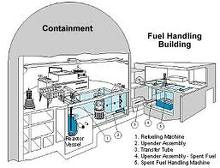 The darkened Superdome evoked memories of Hurricane Katrina, when thousands of displaced New Orleans residents took refuge in the stadium as an emergency shelter of last resort.First, Entergy denied any responsibility, instead pointing fingers at the Superdome. Then, Entergy agreed to the need for an investigation. And now, five days later, Entergy admits that its faulty equipment was the culprit that plunged the Super Bowl -- and 75,000 in-stadium fans -- into darkness for 35 long minutes. 108.4 million others watched the darkness on television.
The darkened Superdome evoked memories of Hurricane Katrina, when thousands of displaced New Orleans residents took refuge in the stadium as an emergency shelter of last resort.First, Entergy denied any responsibility, instead pointing fingers at the Superdome. Then, Entergy agreed to the need for an investigation. And now, five days later, Entergy admits that its faulty equipment was the culprit that plunged the Super Bowl -- and 75,000 in-stadium fans -- into darkness for 35 long minutes. 108.4 million others watched the darkness on television.
It's not unlike that time in Vermont, when Entergy officials testified, under oath, to state officials, that no underground piping existed at Vermont Yankee which could possibly be conducting radioactive materials. Only to have to admit a short time later, that those very pipes which it had denied even existed, were leaking tritium and other radioactive contaminants into soil, groundwater, and the Connecticut River.
Or that time, when it took over at the Palisades atomic reactor in Michigan, when it promised it would replace the corroded reactor lid and degraded steam generators, as well as deal with the worst embrittled reactor pressure vessel in the U.S. -- but never did.
As shown by the Fukushima Daiichi nuclear catastrophe, a prolonged power outage -- no matter what the cause (earthquake and tsunami, other natural disaster, faulty equipment, terrorist attack) -- denying electricity to the safety and cooling systems at nuclear power plants could lead to reactor meltdowns, and high-level radioactive waste storage pool fires.
The Chicago Tribune has reported on Entergy's mea culpa for causing the Super Bowl lights out. CBS Sports has reported that documents revealed concerns about electrical failures in the months leading up to the game. More.





 February 28, 2013
February 28, 2013

